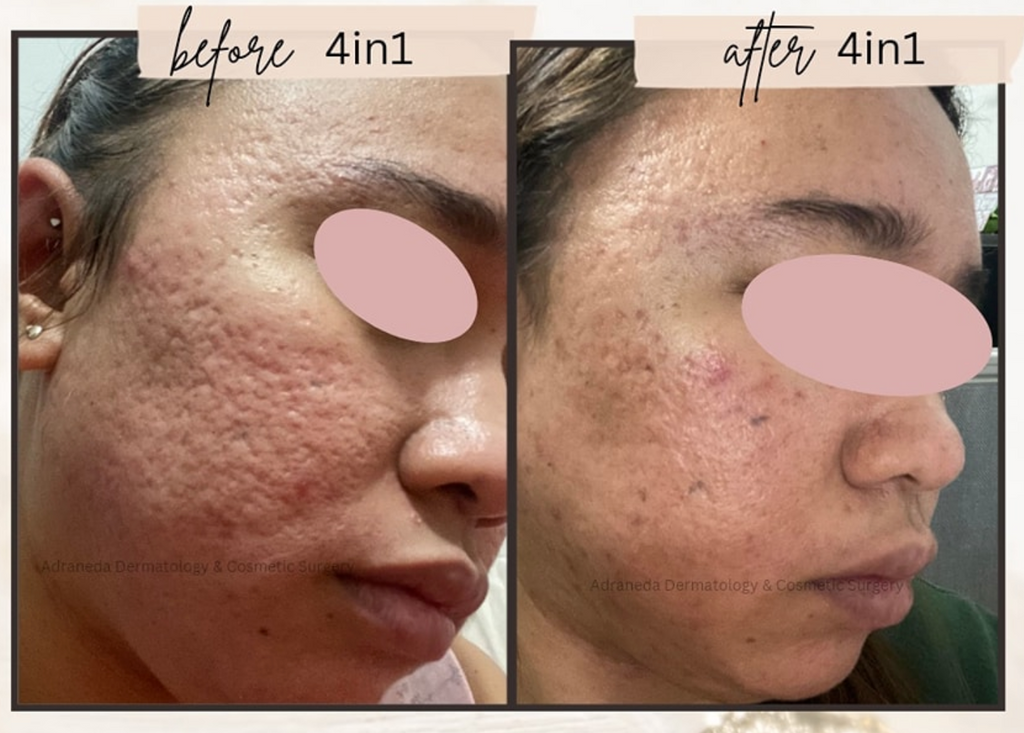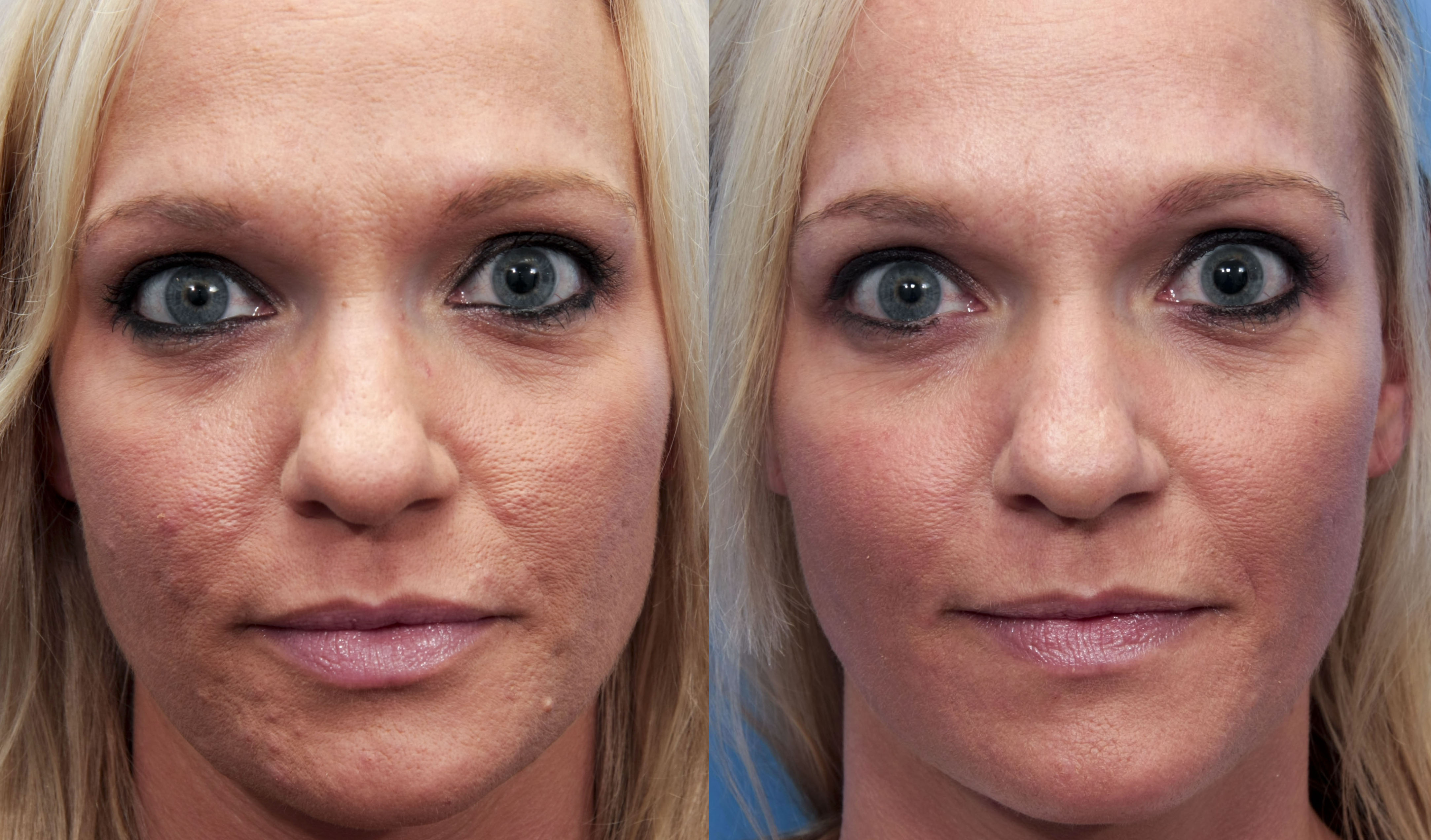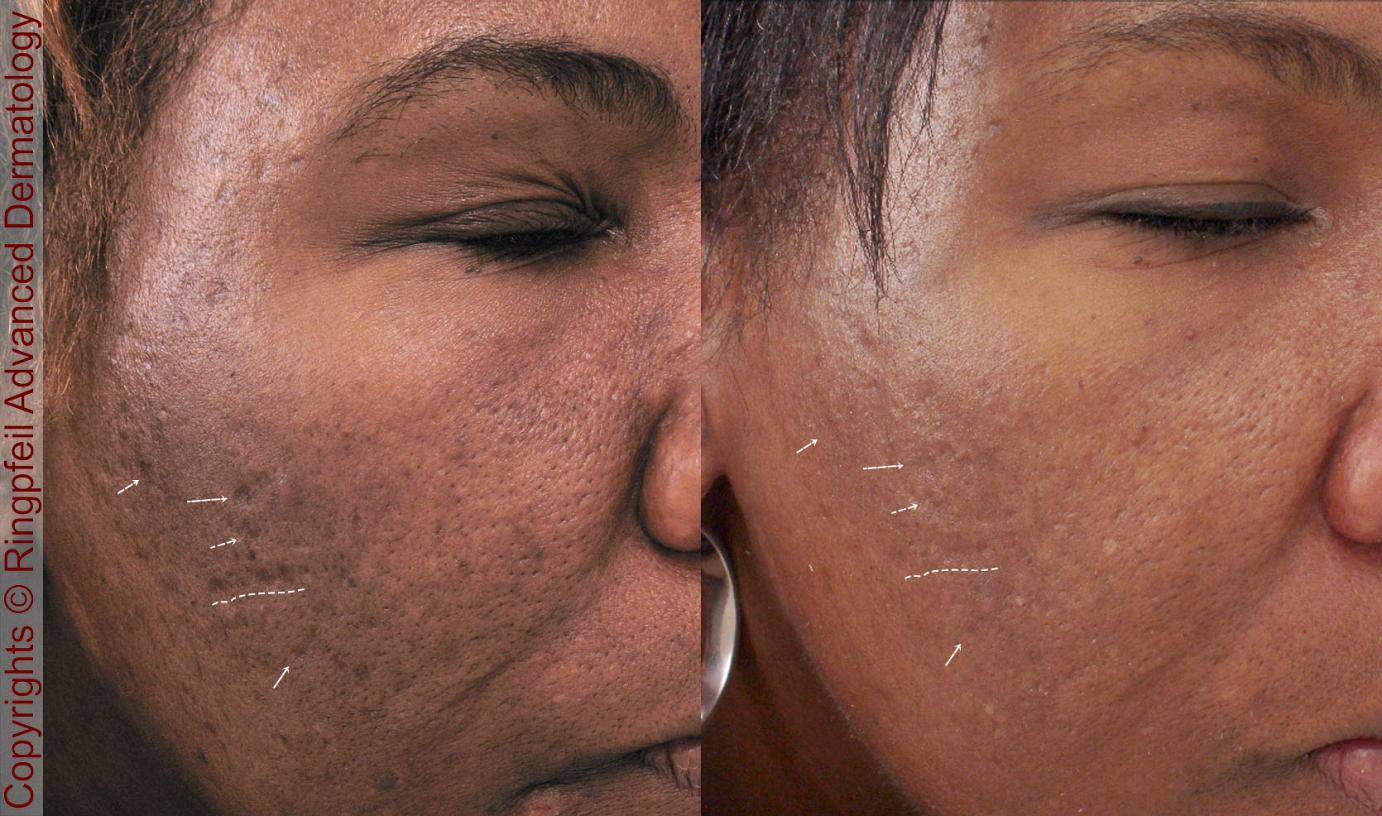Acne and Acne Scars Treatment: Change Your Skin with Proven Solutions
Recognizing the Numerous Skin Problems and Effective Treatment Choices for Acne Marks
Acne scars stand for a complicated interplay of skin problems that significantly effect people' self-confidence and overall skin wellness. As we discover the landscape of acne scar monitoring, it ends up being evident that the trip toward more clear skin may include more than simply topical solutions.
Kinds of Acne Scars
Acne marks can materialize in numerous types, each calling for particular therapy methods. Both main groups of acne scars are hypertrophic and atrophic scars. Atrophic marks are characterized by a loss of cells, resulting in clinically depressed areas on the skin. These scars are more classified right into 3 subtypes: ice choice scars, which are deep and slim; boxcar scars, which are broader and have distinct edges; and rolling scars, which develop a wave-like appearance because of irregular skin texture.
In contrast, hypertrophic scars arise from an overflow of collagen during the healing process, bring about elevated areas on the skin. These scars are typically strong and can differ in color, in some cases appearing red or darker than the bordering skin.

Reasons For Acne Scarring
Marking takes place as a result of the body's natural recovery action to inflammation and injury caused by acne sores. When acne types, it triggers an inflammatory feedback, causing the release of numerous cytokines and development elements that advertise recovery. However, this procedure can often lead to too much tissue formation or inadequate fixing, leading to marks.
The key reasons for acne scarring consist of the seriousness of the acne itself, period of the lesions, and specific skin types. Extreme inflammatory acne, such as nodules and cysts, is more probable to result in scarring because of much deeper tissue damages. Additionally, incorrect handling of acne sores, such as pressing or choosing, can aggravate tissue injury and inflammation, raising the possibility of scarring.
Hereditary predisposition likewise plays a substantial role; people with a family members history of scarring are at a greater threat. Additionally, skin type and color can affect mark formation, as darker skin tones might experience post-inflammatory hyperpigmentation, while lighter skin might create atrophic scars.

Treatment Choices for Scarring
Efficient treatment options for acne scarring vary depending upon the kind and intensity of the marks. Normally categorized into atrophic, hypertrophic, and keloid scars, these conditions require customized strategies for optimum outcomes.
For atrophic scars, which are defined by a loss of tissue, treatments such as chemical peels, microdermabrasion, and laser therapy are commonly used. These approaches advertise skin renewal and stimulate collagen manufacturing, therefore boosting skin structure. Subcision, a minimally invasive procedure, can also work by separating coarse bands below the skin.
Hypertrophic and keloid marks can be extra testing to treat. Alternatives consist of corticosteroid injections to reduce inflammation and flatten the marks. skin rejuvenation treatments. In some instances, cryotherapy or laser treatment may be advised to lessen their appearance
Surgical alternatives are offered for severe scarring, where excision or skin grafting might be required. It's vital for individuals to seek advice from a skin specialist to assess their details scar kind and go over the most appropriate treatment strategy. Combining several therapies usually produces the very best results, ensuring that each person's distinct skin disease is dealt with properly.
Natural Home Remedy and All-natural Solutions
Natural options and natural remedy can give an available strategy for individuals looking for to boost the appearance of acne scars. Numerous ingredients discovered in the home cooking area have demonstrated potential benefits in enhancing skin texture and advertising recovery.
One popular treatment is aloe vera, recognized for its anti-inflammatory and calming homes. Using fresh aloe vera gel straight onto the marks can help enhance skin hydration and minimize soreness. Similarly, honey possesses natural antibacterial and moisturizing top qualities that can assist in mark healing. It can be made use of as a mask, left on for half an hour prior to rinsing off.
An additional reliable alternative is lemon juice, which works as an all-natural exfoliant and can lighten hyperpigmentation. It must be made use of carefully, as it might trigger photosensitivity. Oatmeal masks are also advantageous; their gentle peeling can aid get rid of dead skin cells while calming inflammation.
Necessary oils, such as tea tree oil and lavender oil, can additionally support scar healing as a result of their antimicrobial properties. It is crucial to execute a spot test before using any kind of treatment to guarantee there are no adverse responses. These all-natural services can be a complementary approach in the journey to reduce acne scars.
Protecting Against Future Scarring
Embracing an aggressive method to skin care can considerably lower the risk of establishing future acne marks. Routine cleaning, peeling, and hydration can assist keep skin health and avoid clogged up pores.
Additionally, preventing the lure to press or select acne lesions is important, as this can bring about inflammation and subsequent scarring. Rather, people should concentrate on find this using topical therapies that advertise healing and decrease inflammation. Active ingredients such as salicylic acid, benzoyl peroxide, and retinoids are recognized for their efficacy in handling acne and decreasing marks.

Finally, keeping a healthy diet rich in anti-oxidants and remaining moisturized supports skin regeneration. By applying these preventive steps, people can dramatically decrease their risk of future scarring and promote general skin wellness.
Verdict
To conclude, a detailed understanding of acne marks, including both see page hypertrophic and atrophic kinds, is essential for effective treatment techniques. Tailored interventions, including expert therapies and natural home remedy, can dramatically boost skin look and appearance. Safety nets additionally play a crucial role in minimizing future scarring. Consultation with a skin specialist remains necessary to devise tailored methods that think about specific skin types and scar intensity, inevitably improving the effectiveness of mark management techniques.
Acne marks represent an intricate interplay of skin problems that substantially impact people' self-esteem and general skin health. The 2 primary classifications of acne scars are hypertrophic and atrophic marks. These scars are more categorized right into three subtypes: ice choice marks, which are slim and deep; boxcar scars, which are broader and have well-defined edges; and rolling marks, which create a wave-like appearance due to irregular skin texture.
A detailed assessment with a skin doctor can help figure out the most appropriate intervention, taking right into account the person's skin type, scar extent, and overall skin health and wellness.
Appointment with a dermatologist stays imperative to develop tailored approaches that think visit this site right here about private skin kinds and mark severity, eventually boosting the effectiveness of mark monitoring strategies.